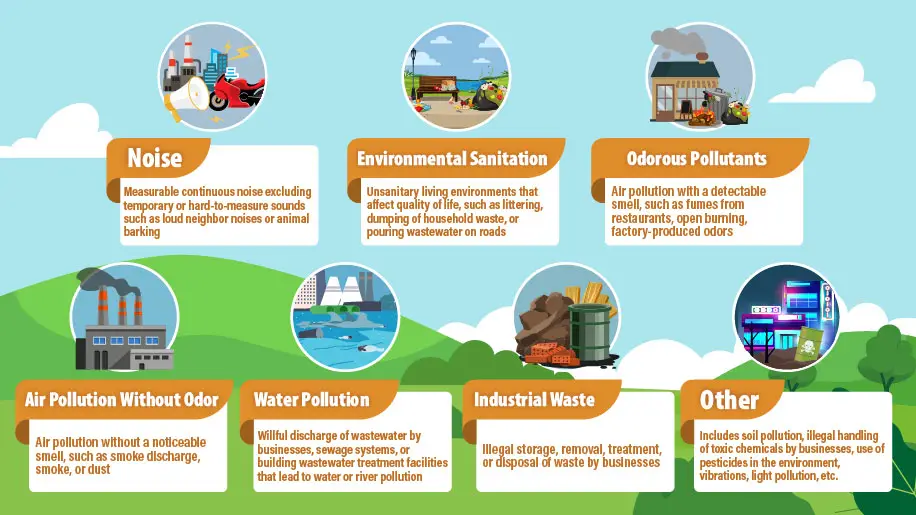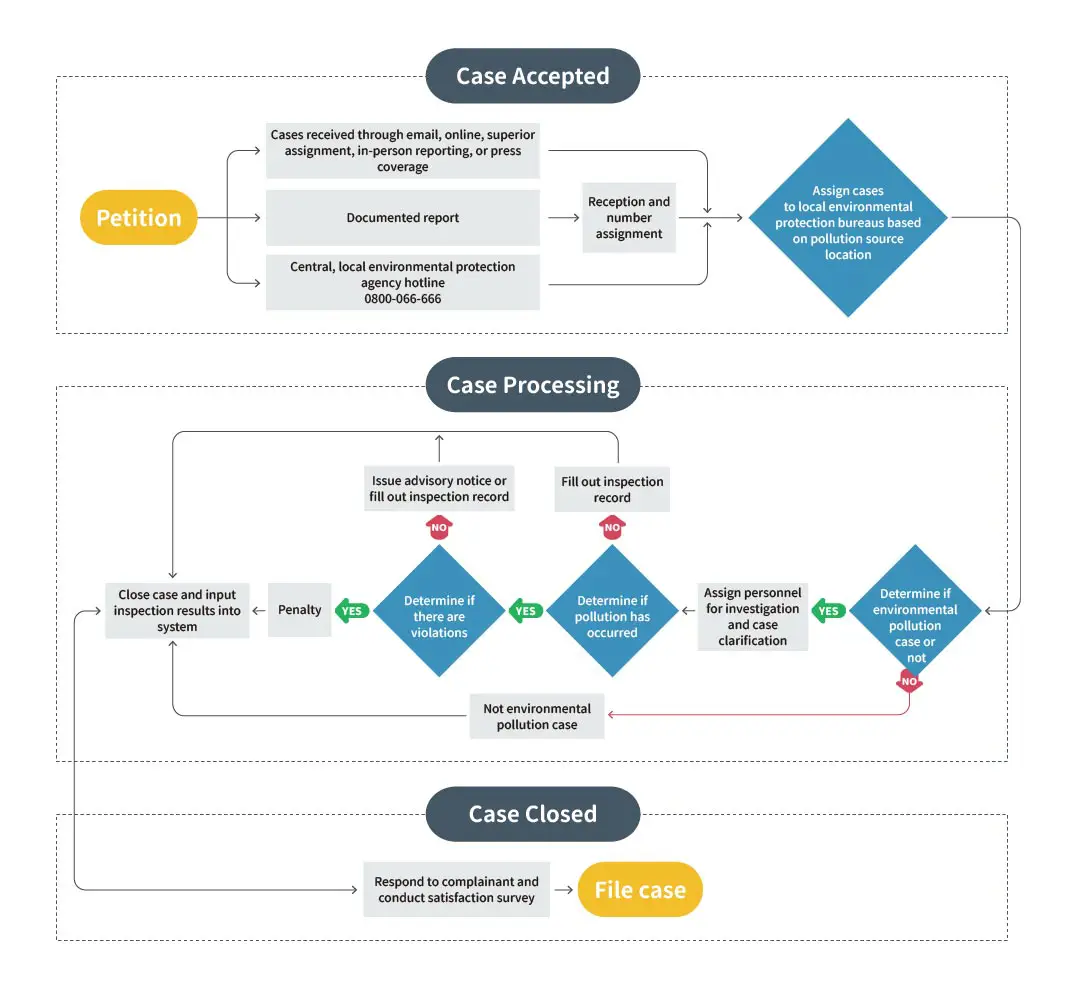 Public Nuisance Petition
Public Nuisance Petition
According to Article 48 of the "Public Nuisance Dispute Mediation Act," established by the Ministry of Environment (formerly the Environmental Protection Agency) in 1992, the central and local governments must appoint dedicated personnel to handle public nuisance petition cases. Therefore, in 1993, the Ministry of Environment established the "Public Nuisance Petition System" to address nationwide public nuisance petition cases from the public for local environmental agencies to manage and handle public nuisance petition cases. The system currently offers diverse channels for complaints, including telephone, email, fax, written submissions, online platform, and mobile apps, allowing citizens to report pollution to environmental authorities at all levels.
Explanation of Public Nuisance Petitions Processing Types of pollution petitions accepted- Noise: Measurable continuous noise (including low-frequency noise) but excluding temporary or hard-to-measure sounds such as loud neighbor noises or animal barking.
- Odorous pollutants: Air pollution with a detectable smell, such as fumes from restaurants or open burning.
- Air pollution without odor: Air pollution without a noticeable smell, such as dust.
- Water pollution: Willful discharge of wastewater by businesses, sewage systems, or building wastewater treatment facilities that leads to water or river pollution.
- Environmental sanitation: Unsanitary living environments that affect quality of life, such as littering, dumping of household waste, or pouring wastewater on roads.
- Industrial waste: Illegal storage, removal, treatment, or disposal of waste by businesses.
- Other: Includes soil pollution, illegal handling of toxic chemicals by businesses, use of pesticides in the environment, vibrations, light pollution, etc.

If citizens encounter environmental pollution in daily life, they can report incidents through various appeal channels such as the hotline (0800-066666), the online Public Nuisance Petition System, the Pollution Report mobile app, written submissions, email, and fax. Environmental agencies will respond quickly. Additionally, citizens can check the status of their cases using the public nuisance petition cases inquiry feature.
Environmental agencies handle cases according to the "Procedures for Handling Public Nuisance Petition by Environmental Protection Agencies." Citizens must provide their real name and contact information, which will be kept strictly confidential to ensure that inspecting personnel can communicate details of the petition and respond with results.

When citizens report environmental pollution cases, the Environmental Protection Reporting Center logs the information into the system and prints a control sheet. Cases are then assigned to environmental protection inspecting personnel, who conduct on-site inspecting and respond to the complainant via their preferred method. (The flowchart for the public nuisance petition process is shown below.)

To report black vehicle exhaust, refer to the Vehicle Emission Reporting System.
To report vehicle noise, refer to the Vehicle Noise Reporting System.
For other items, refer to Public Nuisance Pollution Petitions > Public Nuisance Pollution Petition Service > Petitions accepted by non-environmental protection authorities.
Statistics on Public Nuisance Petition Cases Over the Past 10 YearsA statistical summary of public nuisance petition cases from 2013 to 2024 includes seven categories: noise, odorous pollutants, environmental sanitation, air pollution without odor, waste, water pollution, and others. (Graph shown below)
Through the diverse channels for public nuisance pollution petitions,citizens can notify environmental agencies at all levels about environmental pollution issues observed in their surroundings. Environmental agencies can then respond promptly to prevent further environmental pollution and maintain the quality of the living environment.
- Data Source: Division of Environmental Enforcement
- Publish Date: 2024-08-27
- Update Date: 2025-11-03

 Related Topics
Related Topics



